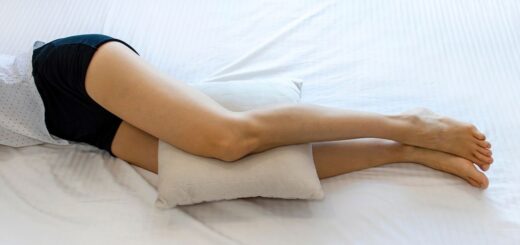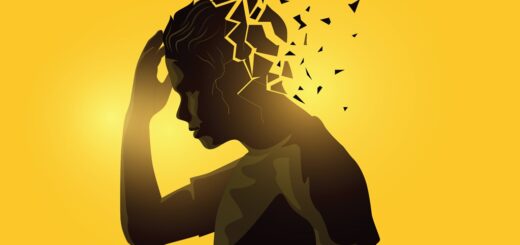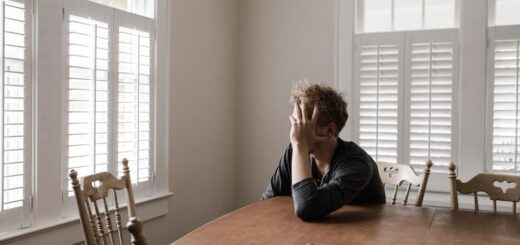Feeling worried or nervous is a normal part of everyday life. Everyone frets or feels anxious from time to time. Mild to moderate anxiety can be an effective means of helping you focus your attention, energy, and motivation. However, if anxiety is severe, you may have feelings of helplessness, confusion, and extreme worry that are out of proportion with the actual seriousness or likelihood of the feared event. Anxiety that becomes overwhelming and interferes with daily life is not normal. This type of anxiety may be a symptom of another problem, such as depression.
Anxiety can cause physical and emotional symptoms. A specific situation or fear can cause some or all of these symptoms for a short time. When the situation passes, the symptoms usually go away.
Physical symptoms of anxiety include:
· Trembling, twitching, or shaking.
· Feeling of fullness in the throat or chest.
· Breathlessness or rapid heartbeat.
· Lightheadedness or dizziness.
· Sweating or cold, clammy hands.
· Excessive startle reflex.
· Muscle tension, aches, or soreness (myalgias).
· Fatigue.
· Sleep problems, such as the inability to fall asleep or stay asleep, early waking, or restless, unsatisfying sleep.
Anxiety affects the part of the brain that helps control creative expression and complex communication. This makes it more difficult to express yourself creatively or function effectively in relationships. Emotional symptoms of anxiety include:
· Restlessness, irritability, or feeling on edge or keyed up.
· Excessive worrying.
· Fearing that something bad is going to happen; sense of impending doom.
· Inability to concentrate; “blanking out.”
· Constant feelings of sadness.
Anxiety disorders
Anxiety disorders occur when people have both physical and emotional symptoms. Anxiety disorders interfere with personal relationships with others and affect daily activities. Women are twice as likely as men to have problems with anxiety disorders.
Many people, including children and teenagers, develop anxiety disorders in which many of these symptoms occur when there is no identifiable cause. Many people with an anxiety disorder say they have felt nervous and anxious all their lives. This problem can occur at any age. Children who have at least one parent with the diagnosis of depression are more than twice as likely to have an anxiety disorder than children with nondepressed parents.
Generalized anxiety disorders often occur with other problems, such as depression, substance abuse, obsessive-compulsive disorder, and post-traumatic stress disorder (PTSD). An anxiety disorder also can be caused by a physical problem, such as heart or lung disease. A complete medical examination may be needed before an anxiety disorder can be diagnosed.
Panic attacks
Panic attacks occur when a person has distinct periods of intense fear and anxiety when there is no clear cause or danger. These symptoms come on suddenly and without warning. Panic attacks are a common anxiety-related disorder. Panic attacks can sometimes occur in otherwise normal, healthy people and will usually last for several minutes.
Physical symptoms that can occur during a panic attack include feelings of choking or suffocating, chest pain, nausea, shaking, sweating, pounding of the heart, and feeling dizzy or faint. Sometimes these symptoms are so intense that the person fears he or she is having a heart attack. Many of the symptoms of a panic attack can occur with other illnesses, such as hyperthyroidism, coronary artery disease, or chronic obstructive pulmonary disease (COPD). A complete medical examination may be needed before an anxiety disorder can be diagnosed.
People who have repeated unexpected panic attacks and worry about the attacks are said to have a panic disorder.
Phobias
Phobias are irrational, involuntary fears of specific places, objects, activities, or situations. Most people deal with phobias by avoiding the situation or object that causes them to feel panic (avoidance behavior). Phobias are a common anxiety-related disorder.
A phobic disorder occurs when the avoidance behavior becomes so extreme that it interferes with your ability to participate in your daily activities. There are three main types of phobic disorders:
Fear of being alone or in public places where help might not be available or escape is impossible (agoraphobia)
Fear of situations where the individual might be exposed to criticism by others (social phobia)
Fear of specific things (specific phobia)
Review the Emergencies and Check Your Symptoms sections to determine if and when you need to see a health professional.
**********************************************
Provided By: HealthWise
Author: Sydney Youngerman-Cole, RN, BSN, RNC
Medical Review: William M. Green, MD – Emergency Medicine and Lisa S. Weinstock, MD – Psychiatry











